2022 Virtual – How to Adjust to the Green-Digital Transformation: A Primer for CACCI
The World is in a rapid transformation process since the start of the new century. Paris Climate Deal of 2015 set the stage for a new framework of climate policy. The change is from binding targets to non-binding nationally determined carbon emission targets.
Delinking carbon emissions to jobs and growth agenda has started earlier in the European Union (EU) and the United States (US). Now, the European Green Deal (EGD) of the EU and the Green New Deal (GND) of the US led to the creation of a new production and trade region on both sides of the Atlantic. The latter has now become a G7 agenda. As G7 comprises 52 percent of global imports, the largest and wealthiest market in the World, standards set there is to become operational globally.

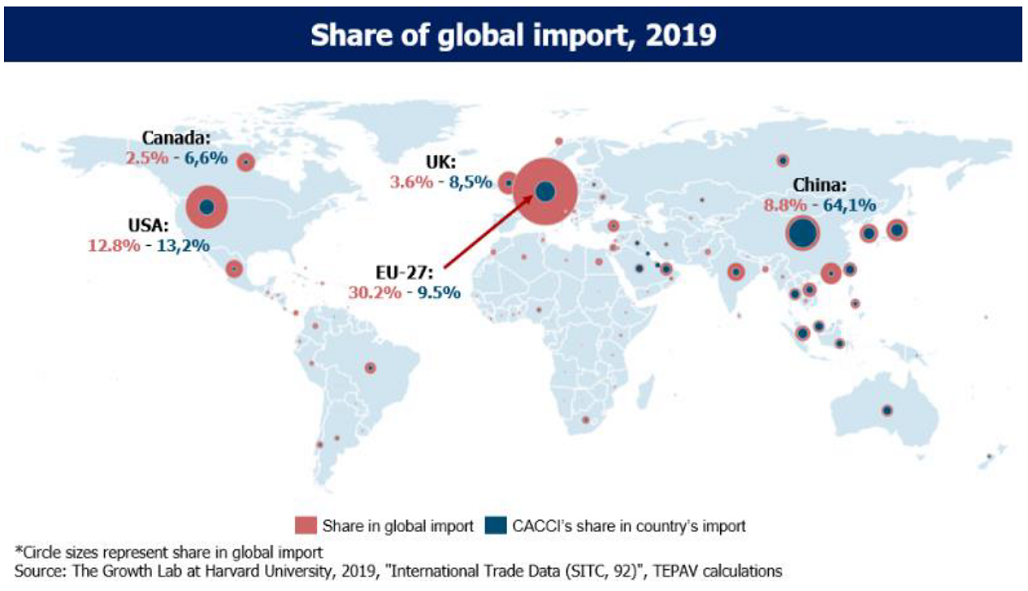
The process of change has increased its pace with the pandemic as the objective is to improve productivity as quickly as possible. Now transnational threats like pandemics and climate are becoming important as well as the return of the great power competition. However, unlike the Soviet period, China is an integral part of the global economy and great power competition this time is going to be mainly economic. Yet there is a strong argument in the West for reshoring or friendly shoring regarding the supply change disruptions due to the pandemic and the way the pandemic period is governed.
In the past, economies bounce back to their initial equilibrium after a crisis. Not anymore. This time it is about bouncing forward to an uncertain future. Yet not all have the same capacity to adjust. Countries, regions, and individuals may not have the skills to rapidly adjust to bouncing forward to an uncertain future. Uncertain times leading to unsettled lives is the reason behind polarization. Hence business support organizations need to develop policy advocacy capacity to contribute to the proper design and management of “just transition” periods.
Asia is becoming the center of gravity of production and export. Developed countries are not at their former strength in global manufacturing supply. East Asian countries have become important actors in global manufacturing yet they still need to keep pace with “transformation processes”.
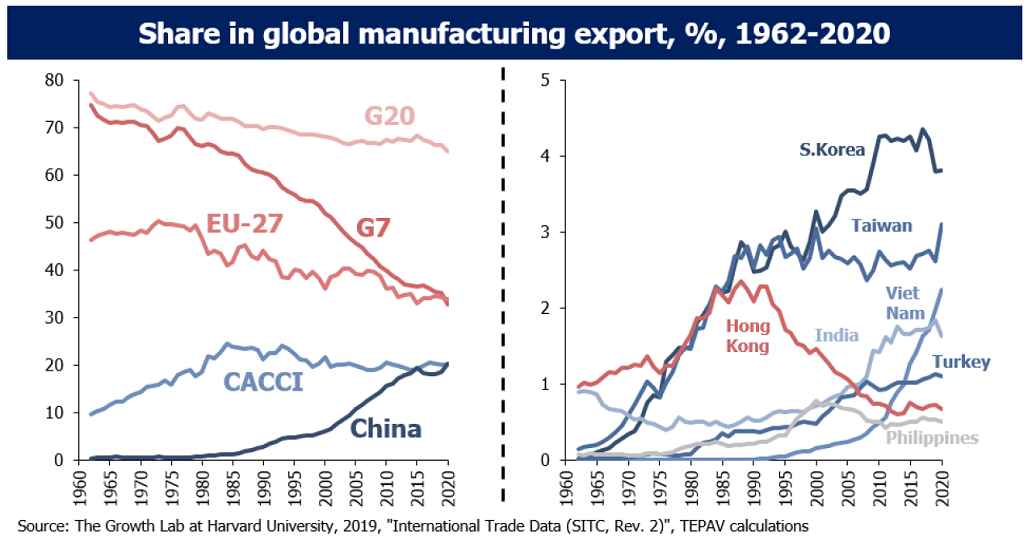
Knowledge generation has also been shifting to the East. China had caught up with the West in higher education and the number of patents. CACCI corresponds to more than one-third of the World population. Building a skill base is essential for the upcoming green transformation.
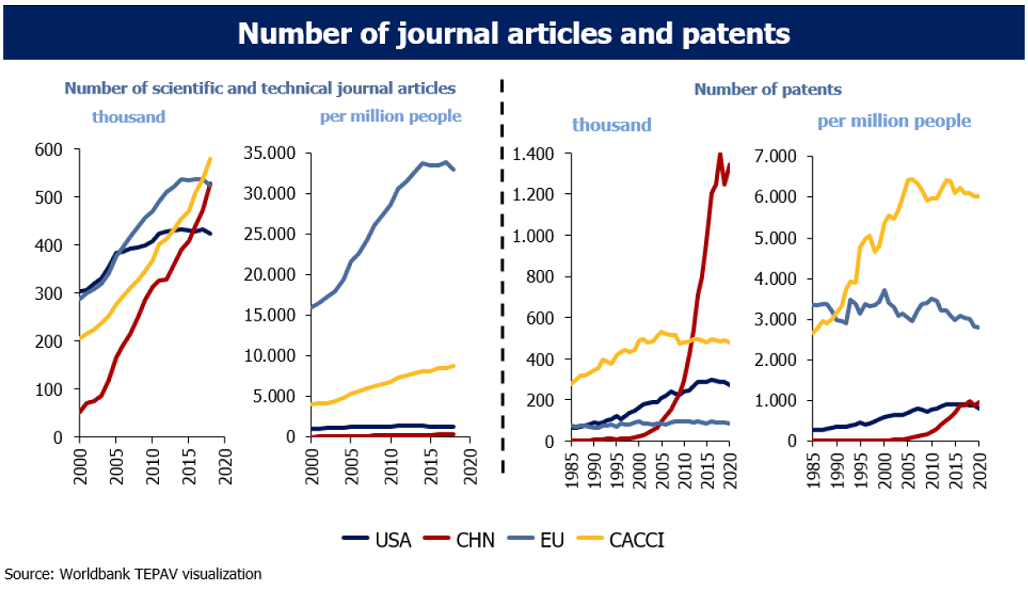
Emerging economies of CACCI nearly caught up with Japan in manufacturing exports. As East Asian countries are still the dominant manufacturing hub in the region, countries like India, Turkey, Viet Nam, and the Philippines have still significantly increased their share.
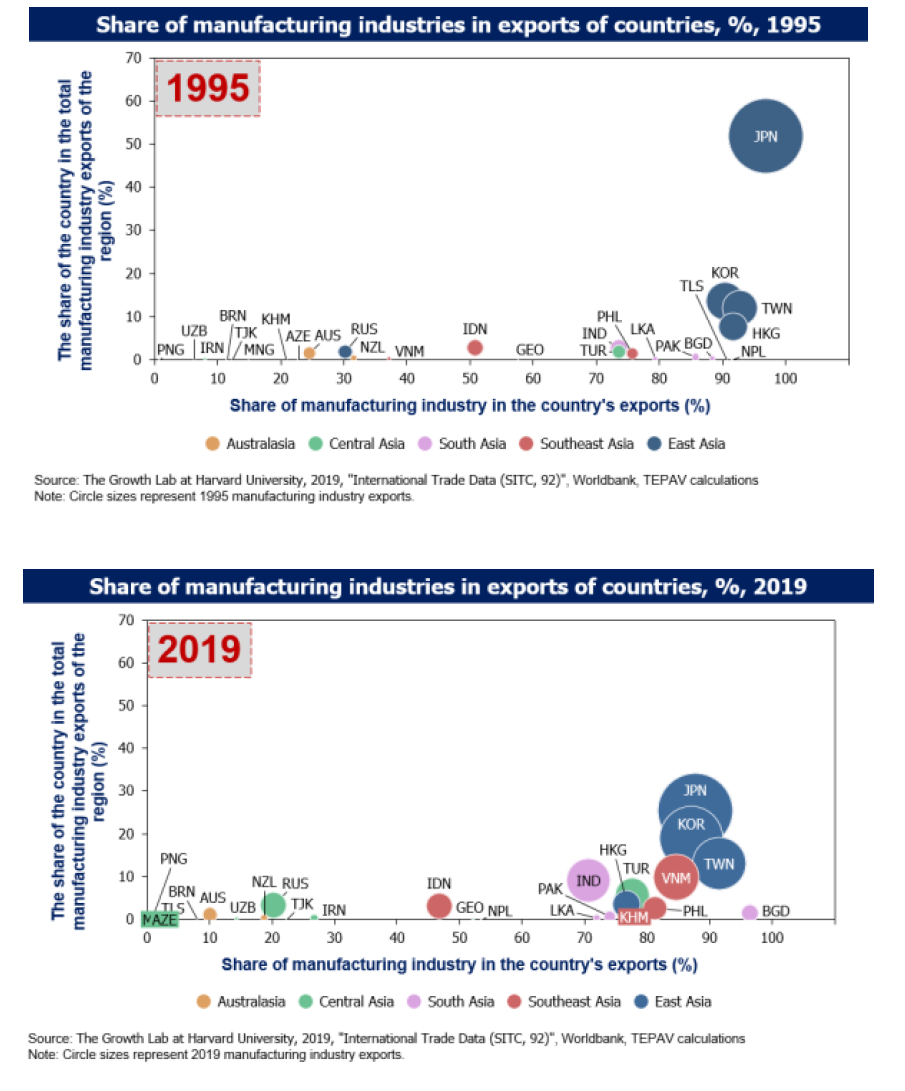
CACCI has a high trade complementarity with other major economies. The degree of export of CACCI matches its partners’ import is more than 90% for G20, China, G7, and EU-27.
EU-27 is a crucial market for CACCI in the manufacturing sector. The manufacturing sector’s share in CACCI’s total exports to the EU is 70%, but CACCI’s share in the EU’s total manufacturing export is 8%. Meaning although CACCI’s manufacturing sector is highly dependent on the EU market but not the other way around.
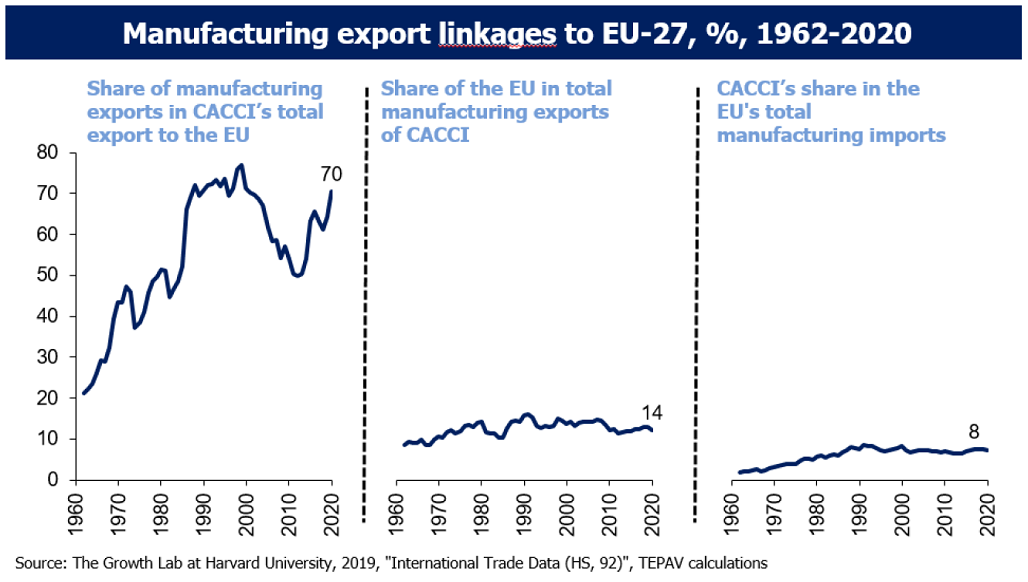
GDP share of common members of G20 and CACCI is 20% in G20, and it is 86% in CACCI. Within G20, the finance track has always been stronger than the development track. Yet now with SDGs and the Paris agreement, the development track needs to be enhanced and strengthened. CACCI can contribute to making G20 more inclusive and flexible by increasing its interaction with G20 engagement groups like B20 and T20.
Natural resource producers in CACCI have higher per capita CO2 emissions. GND is an opportunity for these countries to reduce their per capita CO2 emissions and diversify their production capacities.
Carbon-based growth is history in the EU but not in CACCI members. EU has achieved growth by decreasing CO2 emissions however unless taking immediate actions it does not seem possible for CACCI, except for the East Asia region. Yet most of the CACCI countries taking steps through net zero commitments, excluding a few.

Switching to the high-tech manufacturing industry raises global competitiveness. In the emerging economies of East and South East Asia, a jump in economic sophistication is observed thanks to their increasing high-tech exports. Countries that cannot develop their product diversity and are stuck in sectors such as mining lose their international competitiveness, like Central Asia countries, except Turkey.
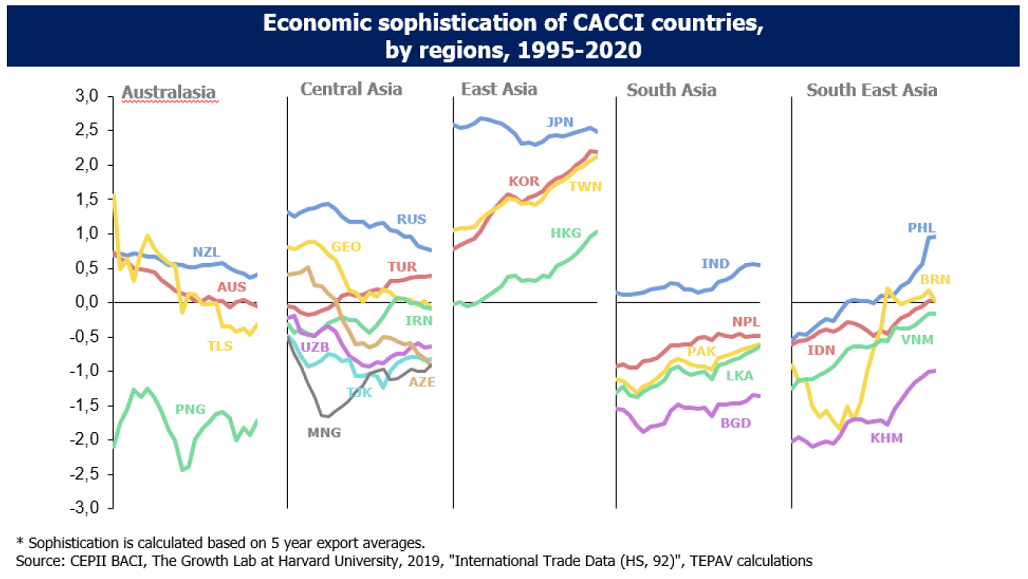
CACCI covers an area that involves diverse countries, both developed and developing, both in the post-Soviet space and not. Different countries might be affected differently but all are going to be impacted by this period of rapid change. CACCI first needs a primer on how EGD and GND are going to influence CACCI countries looking for patterns.
(1) After identifying patterns then the task is to define a policy advocacy platform for the chambers in particular and the CACCI in general.
- G20 could be a useful platform for CACCI to be more active. Especially Think20 (T20), Business20 (B20), and Vulnerable20 (V20) engagement groups of G20 could be added to the scope of CACCI’s policy advocacy efforts.
- Note that in 2021 Indonesia was the president of G20 and in 2022 India is going to take over the presidency. Hence the presidency of G20 is going to be in CACCI geography. CACCI in close collaboration with the official G20 could take a more active role this year. Note that there are CACCI countries among the most vulnerable V20 members, too.
(2) Having identified the platform for CACCI policy advocacy, the task is also to focus on what to advocate for.
- Smart shoring as against reshoring or friendly shoring could be the first item of a policy advocacy platform. EGD or GND will require the value chain of every sector and activity to be reconsidered. Note that this will require global value chains to be realigned anyway. Not today or tomorrow but eventually if the countries that are still part of global value chains do not start designing smart policies making themselves ready for the transformation.
- Climate policy governance and the focus on just transition should be an important items of the policy advocacy agenda. Loss and damage in countries and regions where adaptability is limited have to be taken into account to prevent social and political polarization. Stability is important for wealth creation.
- Climate policy is about capital-intensive transformation and better for aging populations and too costly for poorer indebted nations or countries with current account deficits. Hence a global governance mechanism is of utmost importance to provide access to finance to those who need it.
(3) CACCI has to establish thematic working groups to start capacity building for global policy advocacy. T20 or B20 working groups might be helpful apart from regional priority topics. For example;
- Smart shoring
- Macroeconomic Issues and the social impact
- Digital Connectivity
- Green transformation opportunities
- Building regional value chains
The summary of this policy paper can be downloaded HERE.
The video presentation of the Policy Paper can be viewed in the CACCI YouTube Channel below:







